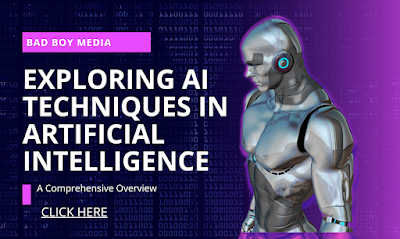
Introduction:
In the world of artificial intelligence, AI techniques are the performance of intelligent systems. With the advancement in technology, researchers and practitioners are constantly exploring and improving various AI techniques to tackle complex problems and achieve remarkable achievements. This Blog provides a comprehensive overview of AI techniques in artificial intelligence, highlighting their importance, applications, and potential to shape the future of AI.
1. Understanding AI techniques:
AI techniques cover a wide range of methods and approaches that enable machines to imitate human intelligence. These techniques include natural language processing, computer vision, expert systems, etc. Each technique has its own unique characteristics and applications, contributing to different aspects of AI development.
2. Machine Learning:
Machine learning is one of the most prominent AI techniques used today. It involves training machines with large data sets to learn patterns, make predictions, and generate insights. Supervised learning and reinforcement learning are popular branches of machine learning, each serving specific purposes in AI applications.
3. Natural Language Processing (NLP):
It includes techniques such as text classification, sentiment analysis, named entity recognition, and machine translation. NLP plays an important role in developing AI applications such as virtual assistants, chatbots, and language processing systems.
4. Computer Vision:
Computer vision involves equipping machines with the ability to analyze and understand visual information from images and videos. AI techniques such as image recognition, object detection, and image segmentation are used in diverse fields such as autonomous vehicles, surveillance systems, medical imaging, and augmented reality.
5. Expert System:
Expert systems integrate human skills and knowledge into AI systems. They use principle-based reasoning and cognitive representation techniques to solve complex problems in specific domains. Expert systems are widely used in fields such as healthcare, finance, and engineering, where accurate decision-making and problem-solving are critical.
6. Deep Learning:
Deep learning is a subset of multiple layers to process complex data and extract meaningful patterns. It has revolutionized AI with remarkable results in image and speech recognition, natural language understanding, and autonomous systems.
7. Reinforcement Learning:
Reinforcement learning involves training an AI agent to learn from interactions with the environment and optimize its actions to maximize rewards. This technique has found success in training AI systems for games, robotics, and autonomous decision-making.
8. Applications and Effects:
The application of AI techniques in artificial intelligence is wide and varied. AI-powered recommendation systems personalize user experiences in e-commerce and streaming platforms. Fraud detection algorithms leverage machine learning to identify suspicious patterns in financial transactions. Autonomous vehicles use computer vision and reinforcement learning to make real-time decisions on the road. These examples show the broad impact of AI techniques across industries, revolutionizing the way we live, work, and interact with technology.
9. Challenges and future directions:
Although AI techniques have made remarkable progress, challenges remain. One challenge is the ethical use of AI, ensuring fairness, transparency, and accountability in the decision-making process. Another challenge is the need for strong data privacy and security measures to protect sensitive information. As AI continues to evolve, researchers are looking for ways to overcome these challenges and develop more efficient, interpretable, and reliable AI systems.
Looking ahead, the future of AI techniques in artificial intelligence holds immense potential. Advances in hardware, such as specialized AI chips and quantum computing, will enable even more complex computing and deep learning. Researchers are also exploring hybrid approaches, combining different AI techniques to create synergistic solutions that outperform individual approaches. Additionally, interdisciplinary collaborations between AI and other fields, such as biology and neuroscience, hold the promise of groundbreaking discoveries and innovations.
10. Conclusion:
Finally, exploring AI techniques in artificial intelligence provides a comprehensive understanding of the fundamental methods and practices that drive intelligent systems. From machine learning to natural language processing, from computer vision to expert systems, each technique brings unique capabilities and applications to the field of AI. As we continue to uncover new insights and push the boundaries of technology, the future of artificial intelligence will transform industries, and improve our everyday lives.
AI techniques form the backbone of artificial intelligence, enabling machines to perform complex tasks, learn from data, understand human language, analyze visual information, and make intelligent decisions. This comprehensive review highlights some of the most important AI techniques, including machine learning, natural language processing, computer vision, expert systems, deep learning, and reinforcement learning. As AI continues to advance, further exploration and refinement of these techniques will pave the way for cutting-edge applications and transformative developments in the field of artificial intelligence.





0 Comments